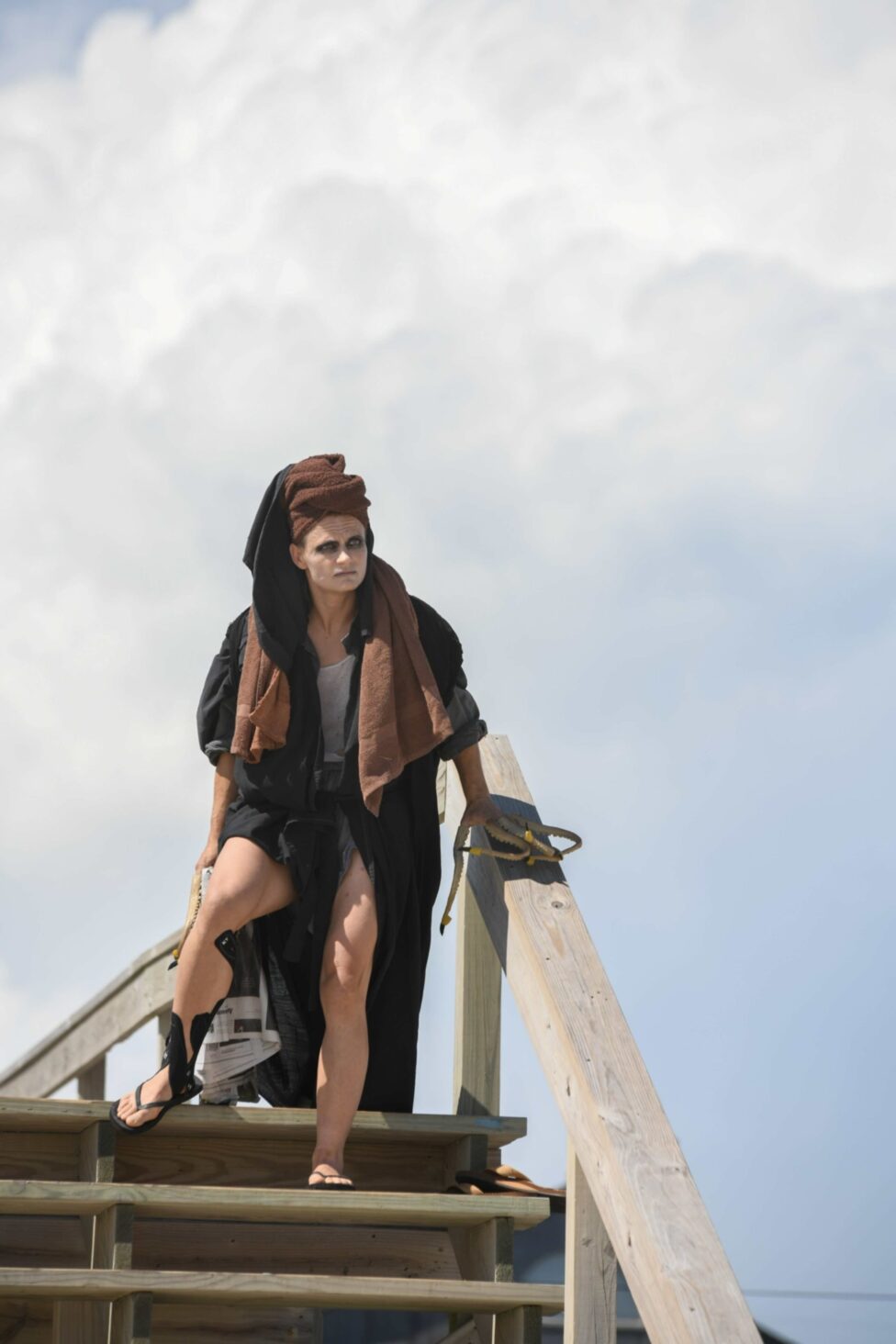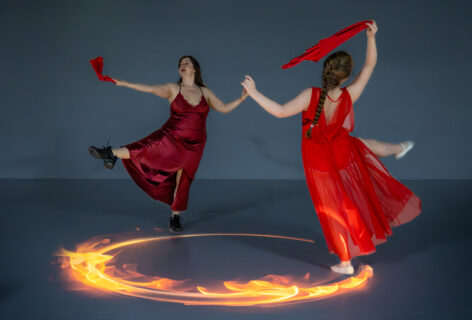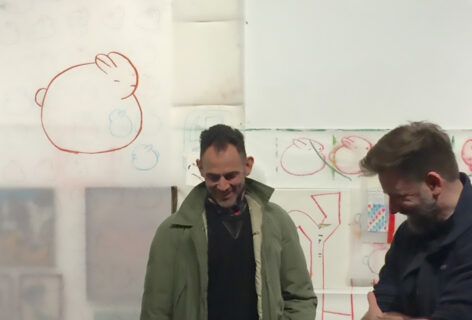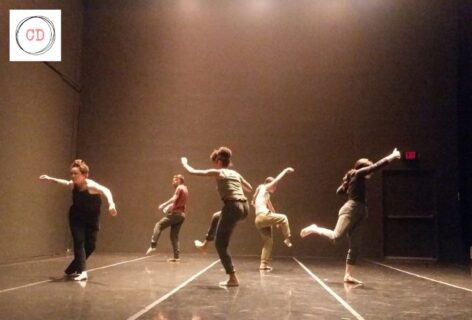No, that’s just, that’s here. Everything, nothing is here. Hum… In other dimensions, we, we’re just projecting, “Oh, I feel like there… Motherfucker.” — Screens: A Project About “Community”
On the basketball court, you set a screen to block an opponent’s movement and/or their view of the play. You screen for your teammate, maybe with a quick glance before you do it, or maybe they already know where your body is going. You are forceful and tough in blocking your opponent’s movement, but it’s an intimate skin-muscle screen that they come up against. They usually hit your fleshy block quite hard, but you’re ready for that. A screen move is ‘legal’ within the game, which allows an often-rough play to continue without interruption. The legality of it is what makes it a screen and not a foul [the category of which imposes a narrower filter on bodily movement], but the legality of it only matters in as much as it means play is allowed to continue. A screen doesn’t lead to a whistle and a pause, but to more play. To screen you must be stationary at the time of impact, and it has to be at the right angle to work. A screen is an orientational choice, a choice to stand still in a direction — that is the whole action.
The performance of the athletic screen can act as an entry point into Savannah Knoop’s sweaty Screens. We enter the baths with the orientation of our own screenings. Savannah says a screen is a type of filtration system. For information to ‘filter’ is for it to gradually become known, whether that means filtering out or filtering in. Savannah’s Screens charts these various directions across the filter, but focuses more-so on the concentrated site of the filter-screen itself as it absorbs, carries, and radiates. Screens takes place at the Russian & Turkish Baths in the East Village amongst a group of regulars and visitors over the course of the past year. The baths are a place of movement in many directions, allowing information to ‘become known’ in and out, again and again, in multiple messy stacks. Knowledge filters in and out of the screen, looking like stacks of keys, rubber bands, slippers, towels, robes, lockboxes, limbs, and legs.
In the Russian Radiant Room: when the fantastic heat from 20,000 lbs of rock cooked overnight becomes too much to bear, you dump ice cold water over your head. This resets you somewhat, but not fully. You still carry the heat and exhaustion from before, but your skin temperature has at least been brought down far enough to stay inside. A larger form of the same hot-cold cycle takes place when you leave the Radiant Room for the cold plunge pool, where you can further reset your temperature. Fake Air Marshal Signal. You do this to enter the Radiant Room again. Reset a new image on the screen. Time to reabsorb. Pick-and-roll. Pick-and-roll. Further play is possible now.
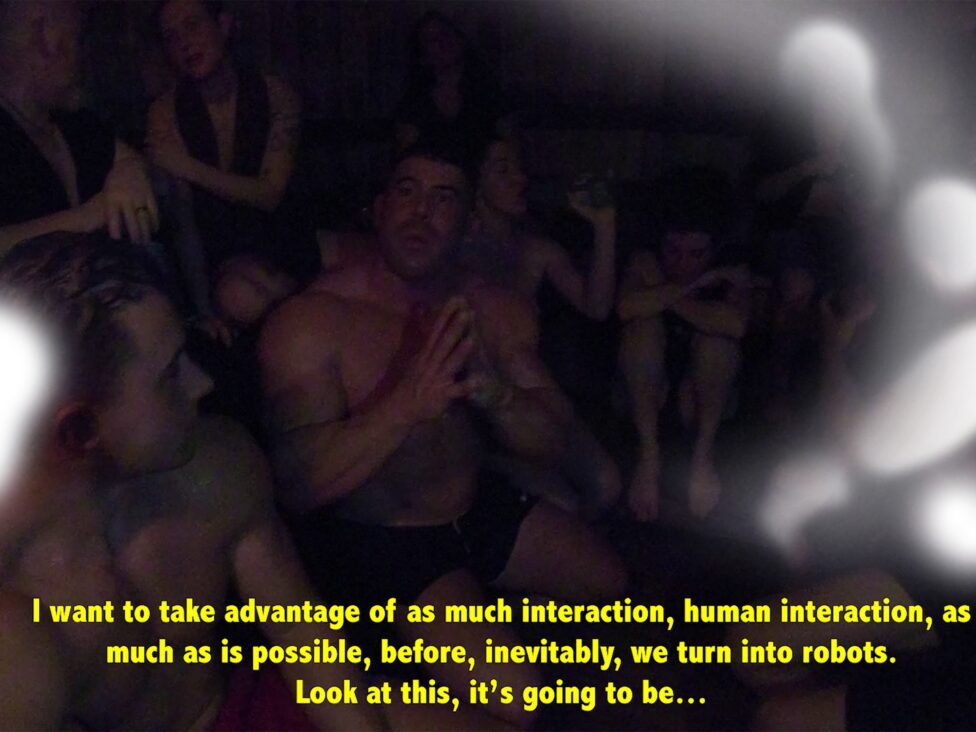
Screens: A Project About “Community”, 2019, video still
In December, a month or so before the Screens installation opens, I go see Savannah in a group performance of Simone Forti’s Dance Constructions at MoMA. Talk about setting a screen! After the performance, we gather to chat: Savannah, me, and another friend of theirs. We discuss where to get the best screens for the installation. Savannah’s friend has a lot of opinions about screens and where to find them: expensive screens and cheap screens. He mentions monitors, which are surveillance screens. We walk through the Bruce Nauman show upstairs, and find ourselves on an old tv screen, surveilled but it’s okay because we’re shown nicely to ourselves [do with that what you will].
Savannah ends up selecting a brick screen for the exhibition, amongst others. Savannah’s brick screen is made of two-by-fours, tinted aqua green and lacquered with aqua-resin. Everything in the gallery is covered in water held inside water. Savannah modeled their brick screen after Eileen Gray’s Brick Screen, first made in 1922 and also in the MoMA permanent collection, housed somewhere hidden ‘behind’ our stroll through the Bruce Nauman exhibition. Eileen Gray was an expert of lacquer. In making her screens, Eileen would apply up to 40 coats of lacquer to wood pieces. Each coat has to dry before the next, until you get a thick shiny build-up. Each ‘brick’ would become its own screen of sorts, a mix of opaque and translucent layers, showing a distorted reflection while thickly blocking the view. They were then assembled into a larger screen of ‘solids and voids.’ Like their brick counterparts, bodies are continuously shifting the space at the Baths, and so presence and absence swivel, rotate, and alternate.
Savannah builds more solids and more voids by weaving together local newspapers, i.e. information filters, into large heavy sheets, after which they are lacquered with aqua-resin in the same fashion as the bricks. The liquids must soak in further to these thin papers than they would into the two-by-fours, soaking into the words and pictures and blurring the inks. Wet newspapers make bad water filters and bad information filters. They quickly fall apart and the words become too blurred. This is where Savannah’s work holds us, at the site of the messed-up, junky, multi-filter — a place that might appear stagnant from the outside [a bunch of people sitting in a fantastically hot room], but actually containing large quantities of action. The bathers sit hot, sometimes talking way too much for some than for others, expressing sentiments that very well could clog our filtration systems. As Savannah expresses, screens are needed to create human pathways, but also to offer a reprieve from others.
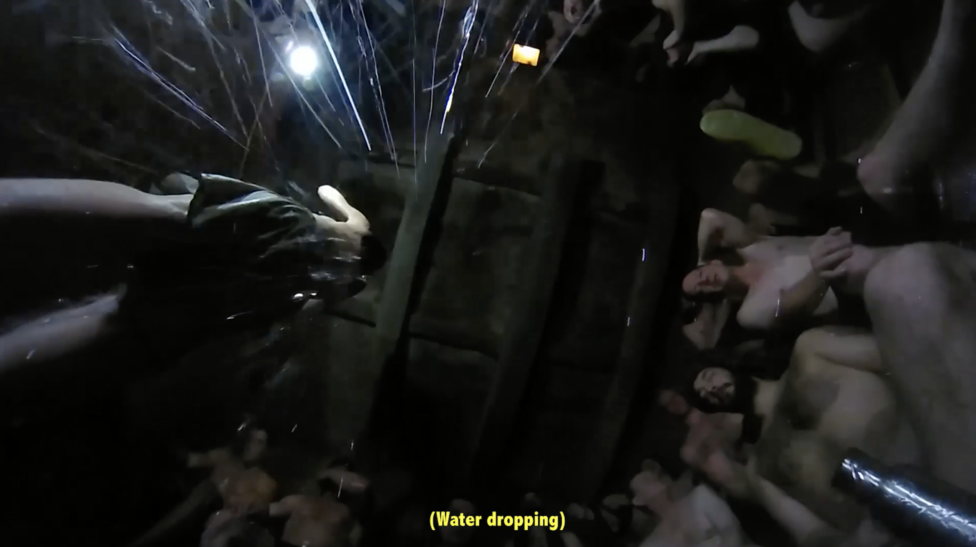
Screens: A Project About “Community”, 2019, video still
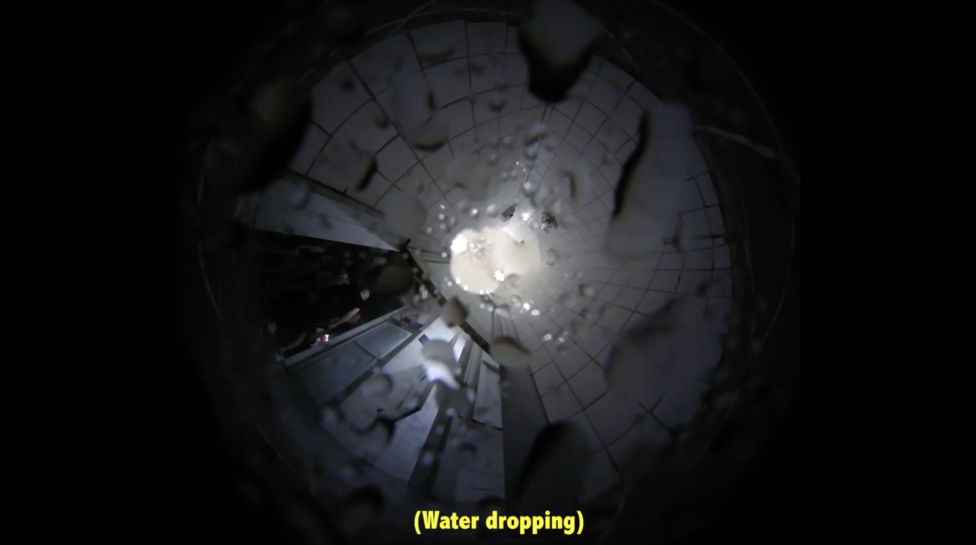
Screens: A Project About “Community”, 2019, video still
The sociality of baths, i.e. simultaneously sharing and blocking, feels well-expressed through a character-filter of Savannah’s, one that appears briefly in their film: Nosferatu. Savannah performed as Nosferatu both at the baths one afternoon and in a delightful August performance on Fire Island called Nosferatu on the Beach. I helped Savannah film their grimy Nosferatu at the baths, in which they donned long rolled-up newspaper fingernails and a towel-made hunchback. The 9-inch newspaper nails were to die for. Nosferatu the film was coincidentally also released in 1922, and so when Eileen was coating her first screens in so many layers of lacquer, another Dracula pervert was engaging in his own hairy-palmed behavior. Watching the film in a dark basement a few years ago, ‘Nos’ came off like Dracula’s weird gay sibling, a sweet dorky little soft butch hungry for lady-kisses (kiss sound), not sure what to do with themselves whilst in town. Savannah’s Nos is a figure amongst the town square and newspapers and the News, not sure what to do with themselves. Nos cycles and cycles through again with their newspaper, screening for a precious place [which might be a bedroom or a neck]. Screening can be a protective measure, but we can also screen for pleasure. As one bather exclaims while another makes a floating cultural critique, ‘Oh, that feels good!’
Working on some footage last August, Savannah and I struggled to capture the creeping, sweet shadow of Nos inside the Russian Radiant Room. We got too hot, the camera got too hot, and the angle was hard. A fellow bathing companion ended up dawning the newspaper nails. We blocked and blocked, finally catching a glimpse of Nos next to the furnace. Savannah warmly described my camera style as “most-perverted.” I had zoomed in and held too long with the bicycle-dad GoPro. I was like Nos, not sure what to do but to stare wide-eyed and point my claws. Who and how will we be in this town?
One night of many screens and many towns was the big group video shoot at the baths last February. This town had a different sociality than the nightly regular, with GoPro filters and pop-up performances everywhere, video footage lacquered over video footage. I felt a sensation that night, and felt it again in watching the resulting film almost a year later: we are lacquered and lathered up with video, picture, body, and speech. Savannah’s Screens are filtration systems arranged so as to get blocked up and built up, to foam at the mouth-body, to lather with whatever ink and stain comes back out and into the skin. The imagined members learn ourselves and our surroundings through the filmy plays, screening and re-screening our visions.
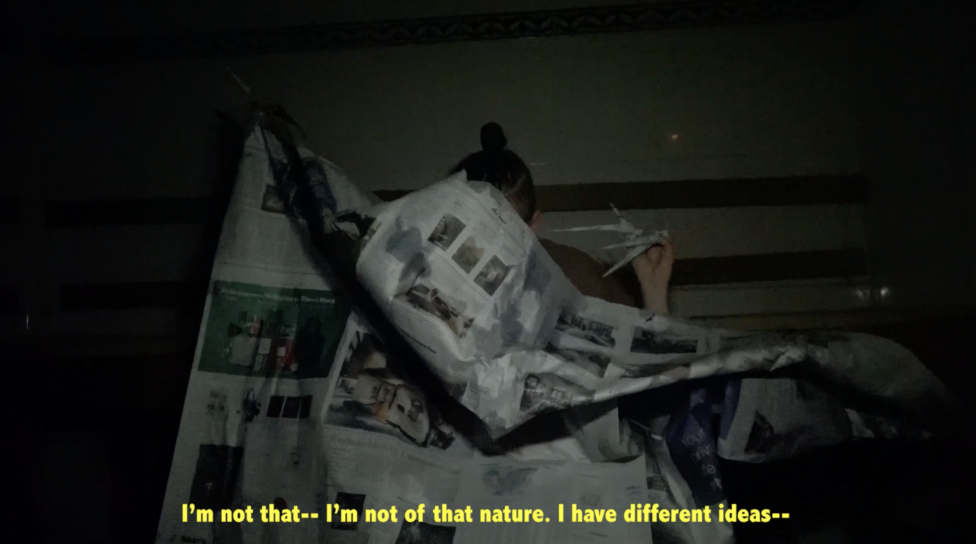
Screens: A Project About “Community”, 2019, video still

